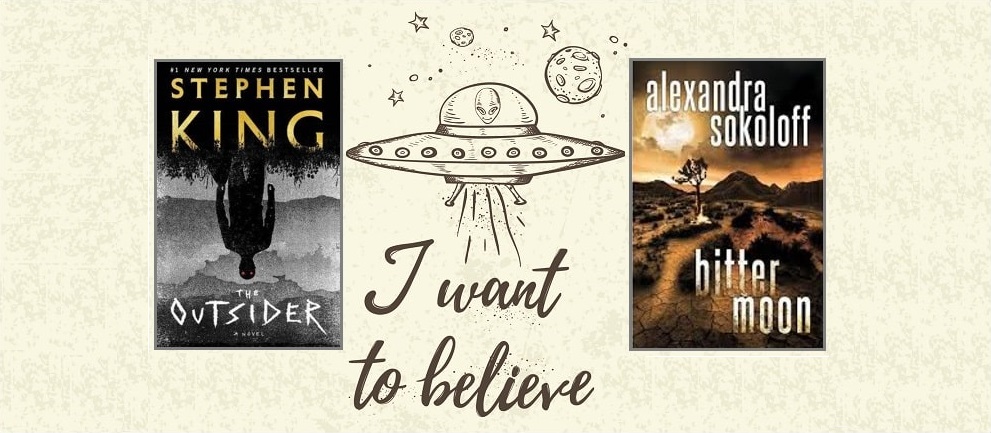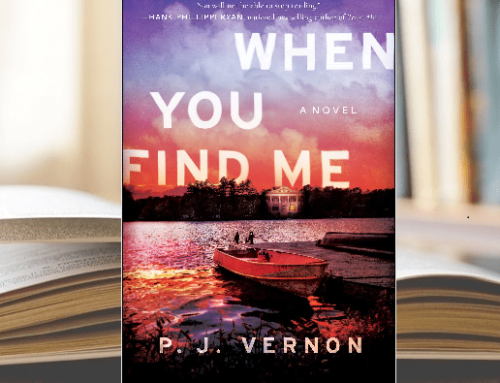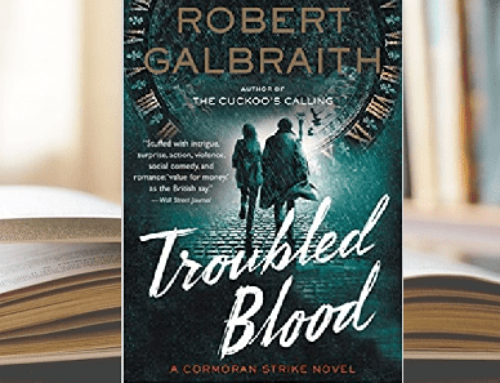[by Ross Browne]
A recent article in The New Yorker defines the willing suspension of disbelief as “the reader’s decision to put the argumentative, quibbling part of his mind into neutral and go along for the narrative ride.”
Stephen King is a master at this, and I’m sure I’m not alone in admiring how easy he makes it to engage us with his novels’ supernatural, paranormal, magical, or mystical elements even if we take some comfort in the belief that these things surely can’t exist. (Can they?) After all, what good are these memorable inventions of his imagination if readers can’t let go of our hang-ups about what’s real or possible and go along for a wild ride?
But King isn’t alone in this, and the experience of reading his recent release alongside Alexandra Sokoloff’s Bitter Moon (the fourth in her riveting Huntress Moon series) got me thinking about how these two very different authors cultivate willing suspension of disbelief in readers in gritty, convincing crime stories with at least one supernatural element.
King’s 2018 supernatural crime thriller, The Outsider, presents an interesting challenge in this regard because it’s both a police procedural (a genre whose readers are well-known to value believability and plausibility) and something akin to a horror novel (a genre in which pretty much anything goes).
On one hand we have a story of a small-city detective’s effort to solve a murder in a world where all the laws of physics and nature are expected to apply. Procedure is involved. Forensics are involved. And readers generally expect these elements to be so convincing that they lay a believable path through the investigation based on familiar ground rules. But this particular story thrusts the detective into unfamiliar territory where a frightening killer with superhuman powers must be outwitted and captured if justice is to be served and a grisly killing spree stopped.
Integrating horror and mystery so the story works on both levels is not an easy thing to pull off. I see King putting some clever techniques to use that can help any writer make magical or supernatural elements play believably in otherwise of-this-world stories:
1. Establish a convincing, fully realized “real world” first, before introducing any supernatural elements
King’s settings are generally deftly and convincingly rendered, and his effort to orient readers in a world that feels familiar, real, and grounded makes everything outlandish that happens much easier to swallow.
The Outsider begins in a place that seems 100 percent normal. There’s artful rendering of the book’s setting and the sometimes-quirky people who live where the story takes place—but not too much of it. Just enough to help us see the world of the story and its inhabitants in our minds and feel as if the small (fictional) town of Flint City, Oklahoma, is a regular sort of place that could actually exist. (It’s the kind of place where everyone knows everyone and local sports are a very big deal.)
The crime being investigated at the start of the story—the murder and sexual molestation of a child—is heartbreaking and horrific, and King makes the forensic and procedural details of the murder investigation convincing. The lead investigator on the case, Ralph Anderson, is a wise and experienced detective who approaches the case the way any good cop would. Much of the book has the complexion and flavor of a traditional mystery, and I think it’s fair to say that King earns readers’ trust early on with careful attention to real-life details and the way police investigations really work.
2. Introduce the supernatural elements little by little
Disbelief is often easiest to suspend when readers are gently coaxed into the experience of the supernatural rather than thrown in all at once. The Outsider introduces the supernatural elements one at a time and rather quietly, in a way that doesn’t draw too much attention or break the spell of the murder case’s intrinsic interest.
First, we encounter a mysterious substance at the crime scene that can’t quite be explained. Then we learn that a man who was well-known to Flint City’s community and recognized by many citizens at the time and place of the murder was also caught on video several hundred miles away in the company of reliable witnesses who can provide an airtight alibi. How could he be in two places at once? Naturally, Anderson and his colleagues look for reasonable, of-this-world explanations until later plot events force them to open their minds and consider other possibilities.
One turning point comes when readers discover that a man several cops took notice of at a public gathering simply isn’t there on video footage captured by several TV networks. Another occurs when several characters, including Anderson’s wife, have encounters they can’t explain with a man (well, sort of…) who doesn’t seem quite human.
King folds the supernatural elements into the story little by little, making the transition from police procedural to more of a supernatural thriller quite comfortable. As a reader and editor who loves mysteries but only rarely goes for horror, I found it a seductive technique.
3. Introduce a believer and a skeptic
One great way to help readers suspend disbelief is to have a character in the book who also needs persuading—a skeptic. This allows authors to cop to what’s hard to believe about their story and provides an opportunity to do some artful persuading. Another is to have a character in the book who does believe and helps the skeptic see the light of possibility. (Think Fox Mulder and Dana Scully.) King does both in The Outsider. This creates engaging tension in the story and helps pull readers into the belief (or, more accurately, the willing suspension of disbelief) that allows us to fully engage with the supernatural side of the plot.
Cops tend to be skeptical people by nature and quick to reject explanations that fall outside their own perceptions of reality. Detective Anderson is understandably reluctant to accept the notion that the perpetrator of this crime is a monstrous inhuman being. He’s sure there must be other explanations. But the wonderfully quirky and persuasive Holly Gibney, though an investigator (of sorts) herself, is wired a bit differently from Anderson in what she’s willing to believe. She has a keen interest in an old folk legend that helps readers appreciate some real-life context for belief in a monster. She quickly becomes quite an effective ambassador for what Anderson and his team must accept at face value if they’re going to stop this killer. There’s some wonderful dialogue between Anderson and Gibney that serves as a catalyst for getting readers to buy into the supernatural thread of the story.
The cumulative effect of these three steps can serve as a guidepost for authors writing books that need to be convincing on one hand yet imaginatively horrific on the other.
Alexandra Sokoloff’s Bitter Moon is a “cold-case” police procedural of sorts, and by this point in the series protagonist Matthew Roarke is on leave from the FBI and working the case on his own time. Much of the book is written from Cara Lindstrom’s point of view in the formative years of her becoming a vigilante-cum-serial killer who does many bad things (or at least illegal things) for very good reasons.
The rest of the book shows Roarke using cop know-how to find out who raped, burned, and maimed a teenage girl some sixteen years after the case went cold. By this point, he’s given up on catching Lindstrom, in part because she’s not his problem anymore and in part because every single person she kills is a violent predator who deserves what they get.
There are only two paranormal elements that Sokoloff needs to “sell” to make the story work. The first is that Lindstrom can literally see evil in people and anticipate gruesome crimes before they happen. The second is something of a psychic connection between Lindstrom and Roarke.
Sokoloff’s approach to encouraging readers to take these leaps is similar to King’s in many respects. She takes her time working them into the fabric of the story and sets them against a very convincing and plausibly rendered procedural backdrop where all the rules of real life apply.
She takes things a step further in the smart utilization of Lindstrom’s point of view, not in the adult perspective used in other books in the series but in the perspective of a troubled teenage girl at the mercy of California’s juvenile justice system after surviving the murder of her family and taking the life of her assailant.
Seeing the world through Lindstrom’s eyes is a remarkable experience. Sokoloff apparently knows the juvenile justice system in California quite well, and her rendering of how things go down there injects a sad shot of reality into the story. But she also takes great care to let readers see what Lindstrom sees firsthand—the evil she can perceive in others. This starts with a jarringly memorable (and in my opinion, utterly brilliant) opening scene that chronicles an event so intense and psychologically jarring it’s not hard at all to accept that it creates in her extra attunement and hypersensitivity to bad intentions. This attunement of Lindstrom’s is convincingly rendered in earlier books in the series that showcase her experience as an adult, but it’s especially convincing here, thanks to the firsthand look at the circumstances that created her ability.
Bitter Moon has an unusual structure, cutting back and forth between Roarke in the present day and Lindstrom sixteen years earlier. The connection between the two timeframes is bridged by Roarke’s near-obsessive interest in Lindstrom and his desire to know more about her, which still burns strong even after her arrest.
One thing I should mention here is that Lindstrom is so broken, cautious, and deliberately circumspect that she barely speaks. This means an important conduit for characterization—a character’s dialogue with other people in the book—is pretty much off the table. It’s amazing to me how compelling and fully realized Lindstrom comes across when we almost never hear her speak in anything resembling a normal conversation. I remember feeling some of the same admiration for Stephen King in his presentation of Jessie Burlingame in Gerald’s Game. (There’s not much to say when you spend a good portion of a novel alone in an empty house, chained to a bed awaiting a slow death.)
At the end of the day, while it’s not realistic or even necessary to expect readers to actually believe in The Outsider’s El Cuco monster or Cara Lindstrom’s psychic abilities, the willingness to let go of disbelief is crucial.
So, to recap suggestions for authors who write these kinds of stories:
- Be selectively generous with the way you establish the settings for your story. Pay close attention to the way you describe things, how much detail you give, especially early on. Remember that the more vividly you portray your world, the more real it will seem. (But don’t get carried away, giving readers so much that it bogs down your plot or pacing.)
- Consider working in hints of supernatural elements a little at a time. This often makes them easier to swallow than if they were to come suddenly from out of the blue.
- Don’t hesitate to use news events or established legends to help bolster the possibilities in your novel or get readers to see them in a more familiar light.
- Consider having a skeptic in your cast who can voice doubts about what’s hard to believe and give you the opportunity to help readers see your supernatural elements in the most persuasive light. Consider a scene or two where someone tries to persuade the skeptic to open their mind to what seems impossible—hopefully, in a way that has the same effect on readers.
- Consider writing compellingly and persuasively from the viewpoint of a character who does believe and putting this character in engaging conflict with one who doesn’t.
- Make everything that isn’t supernatural feel as true-to-life as possible.
The last thing you want is for readers to be distracted from what’s happening on the page by something on the page that they can’t believe for a nanosecond. But although we’ve seen the approach outlined above work countless times in successful novels, do remember that in writing fiction there’s no single correct way to do anything. Every novel is different, and your approach to cultivating suspension of disbelief depends ultimately on what kind of experience you’re looking to create for your readers.







